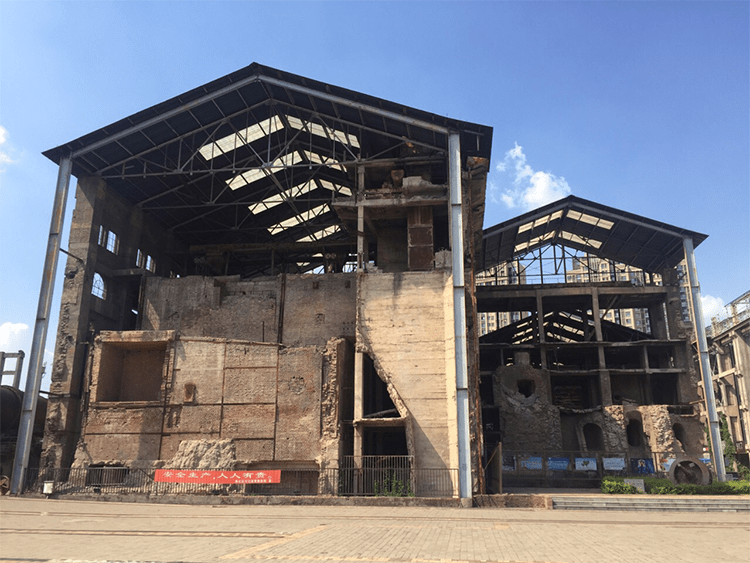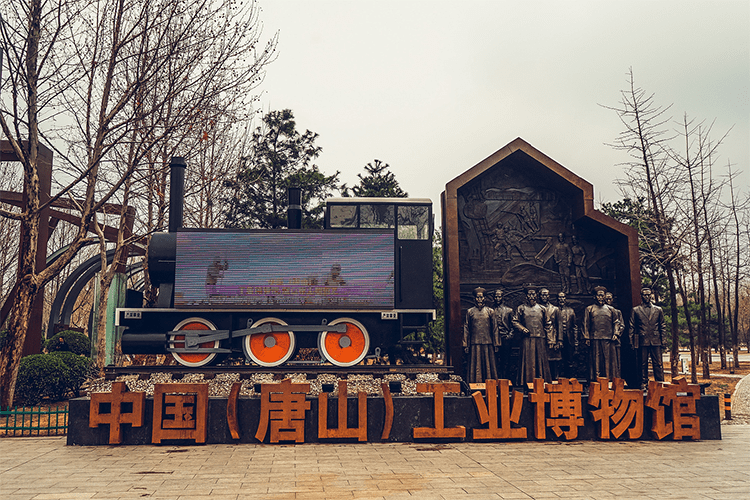Tangshan Qixin Cement Museum: A Visitor’s Guide to Chinese Industrial History
Prologue: Feel the Pulse of China’s Industrial Civilization
When you push open the heavy iron gate, the metallic tang of gears and a century of cement dust greet you. Tangshan Qixin Cement Industrial Museum is not a conventional glass-case museum but a living industrial site. Early 20th-century German machinery still stands tall among weathered factory walls that record key moments in China’s industrialization. As China’s first museum dedicated to the cement industry, the site preserves a complete production line dating back to 1889, letting visitors witness how the “cradle of China’s cement industry” rose from barren ground.
Wandering this “living museum” launches a time-and-space conversation: rusted machines meet modern interactive exhibits, and traditional industrial culture blends with contemporary creative uses. Its 2018 listing on the national industrial heritage register confirms the museum’s unique role in China’s industrial history. Whether you are an industrial history buff, an architecture professional, or a traveler seeking an unusual experience, this site offers memorable moments.
1. Historical Treasure: From National Industry Cradle to Official Industrial Heritage
The story of Qixin Cement Factory begins in 1889, when modern industry in China was in its infancy. As one of the country’s earliest native cement enterprises, its cement helped build the Beijing–Zhangjiakou Railway and Tianjin’s historic Western-style churches, bearing witness to China’s difficult transition from an agricultural society to an industrial nation. The museum grounds are the most authentic carrier of that proud history.
The buildings themselves are prime exhibits: factory clusters designed by German engineers fuse European industrial utility aesthetics with Tangshan’s local character. Tall steel frames, brick-red façades, and sawtooth roofs exemplify early 20th-century industrial architecture. Remarkably, these century-old buildings are not inert specimens but carefully repurposed, active spaces where old and new collide to striking effect.
Recognized as a living fossil of China’s cement industry, the Qixin site occupies a special place among national industrial heritage properties. It documents the rise and fall of a single enterprise and compresses the broader story of China’s modern industrialization. Standing in the central yard, you can almost hear the machines roar again.
2. Core Exhibits: A Time-Travel Through Cement Production
The museum’s crown jewel is the 1906 rotary kiln system imported from Germany — a towering machine over ten meters high where traces of fine German engineering are still visible beneath rust. Astonishingly, this century-old equipment remained in operation until 2008, making it one of the longest-serving devices in China’s cement history. Nearby, the original raw material mills — massive cast-iron components weighing tens of tons — show the period’s top-tier mechanical manufacturing.
Exhibits follow the production flow: “raw material — calcination — grinding — finished product,” guiding visitors through the full cement-making process. In the history gallery, yellowed photos and rare documents transport you back to Tangshan’s heyday as a cradle of modern industry. The process area combines multimedia demonstrations and physical artifacts to explain how limestone becomes finished cement.
Interactive installations are a highlight: operate simplified simulation equipment to experience early industrial workers’ tasks, or don a VR headset to step into a century-old workshop and witness the heat and bustle of historical production. These modern presentations make technical history engaging and accessible.

3. Atmosphere: Immersive Industrial Aesthetics
On entering the compound, you’ll be struck by an honest, rugged industrial aesthetic. High factory halls, crisscrossing pipes, and exposed steel frameworks create a visually powerful scene. This is not the reserved distance of a white-cube museum; instead, it’s a friendly reconstruction of a workplace—you can almost smell cement dust and hear machines hum.
The onsite route follows original material transport lines: you’ll pass the crushing workshop, raw material mill, rotary kiln system, clinker store, and other parts of the production chain. Many industrial features are preserved intact, including iron rails and transport vehicles.
The museum attracts varied visitors: researchers treasure the first-hand materials; photographers are drawn to dramatic industrial landscapes; families enjoy interactive learning. Language is no barrier in this sensory space—visitors from around the world find moments that resonate.
4. Perfect Itineraries and Timing
Highlights Route (1.5 hours)
Start at the East Gate → History Gallery (30 minutes) → Central Rotary Kiln Area (20 minutes) → Process Display Area (20 minutes) → Creative and Souvenir Zone (20 minutes). This route suits visitors with limited time and covers the museum’s core.
In-Depth Route (3+ hours)
Take the highlights route and add the raw material pretreatment area → raw material mill → clinker store → factory history hall → roof viewing platform. Pause at the industrial-style café inside the complex to savor the atmosphere and examine details at leisure.
Combine the museum with nearby Tangshan Earthquake Memorial Park and Kailuan National Mine Park for a full-day Tangshan industrial heritage tour. Morning at Qixin, afternoon at the mine park, and sunset reflection at the earthquake memorial provide a rounded cultural experience.

5. Practical Tips for a Smooth Visit
Guided Services: The museum offers Chinese and English audio guides (rental 20 RMB). Free Chinese guided tours run daily at 10:00 and 14:00. English map brochures are available at the entrance and main exhibits feature bilingual labels.
Admission: Adult tickets are 60 RMB; students with valid ID pay half price. Purchase tickets in advance via the official WeChat account “Tangshan Qixin Museum” or at the gate with cash or mobile payments (WeChat Pay/Alipay). Foreign visitors are asked to show a passport.
Opening Hours: Tuesday–Sunday 9:00–17:00 (last entry 16:30). Closed Mondays except national holidays. To avoid weekend crowds, consider visiting mid-afternoon on weekdays.
Getting There:
– Metro: Tangshan Metro Line 1 to Qixin Station, Exit D, about an 8-minute walk
– Bus: Take Tourist Bus 1 or Route 60 to the “Qixin Cement Factory” stop
– Car: East Gate parking available at 5 RMB/hour
Facilities: Free Wi-Fi across the site; mother-and-baby rooms and accessible routes are provided. The industrial-style café serves light meals and drinks. The gift shop sells unique cement-themed crafts—ideal souvenirs.
6. Local Insider Tips
• Secret photo spot: The old factory roof platform offers sweeping industrial panoramas—best at dusk for dramatic light.
• Special experience: On the first Saturday of every month (Industrial Heritage Day), select historic equipment may be demonstrated in operation—an unforgettable spectacle.
• Food surprise: At the exit, try the “cement bun” stall selling novelty sesame buns shaped like cement blocks—a playful local treat.

Epilogue: A Time-Travel Through Industrial Civilization
Tangshan Qixin Cement Industrial Museum is more than a collection of old objects; it is a frozen industrial epic and a three-dimensional textbook of China’s modernizing journey. Cold steel tells fervent stories; silent factories echo the rhythms of an era. Touch these century-old iron giants and you may sense the determined heartbeat of Chinese industrial civilization.
Whether you come for industrial history or simply a distinctive travel experience, this museum delivers a powerful cultural impact. It reminds us that history is not only in books and relics but also engraved in machines that once changed the world. When planning your Tangshan trip, reserve ample time for this extraordinary industrial cathedral—it deserves careful listening and slow appreciation.
Ready to trace China’s industrialization through time? Tangshan Qixin Cement Industrial Museum awaits you to unlock the secrets of modern China’s industrial rise.


